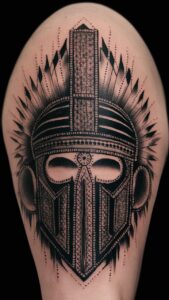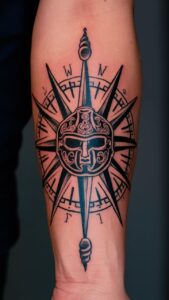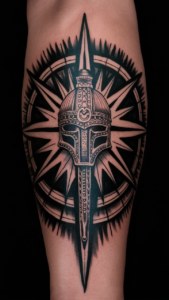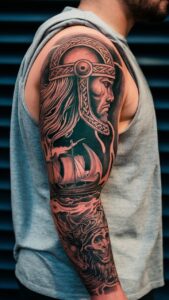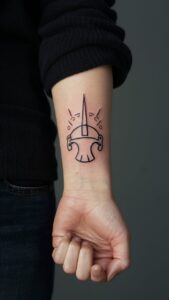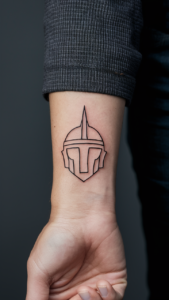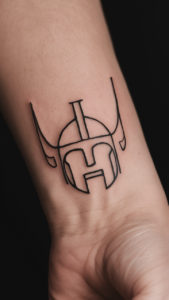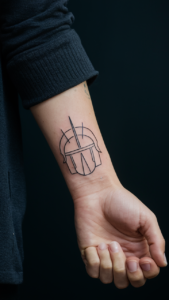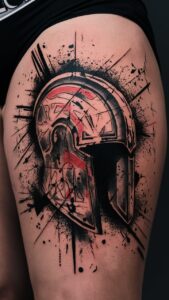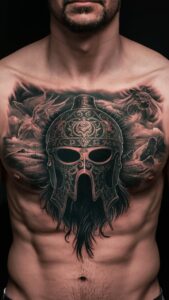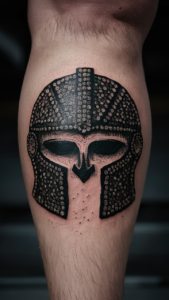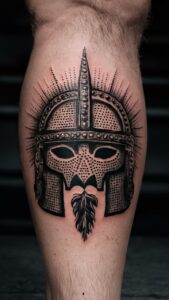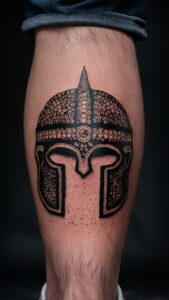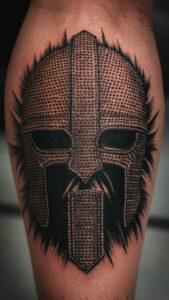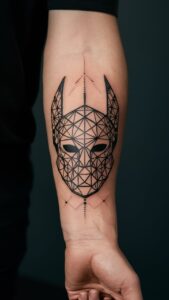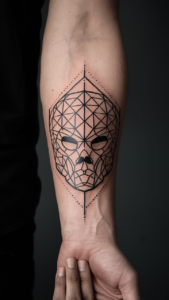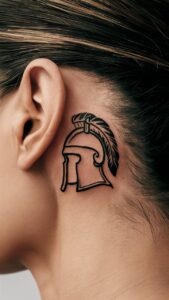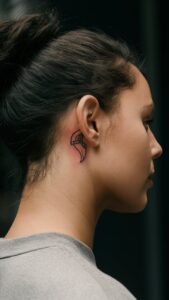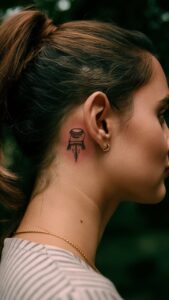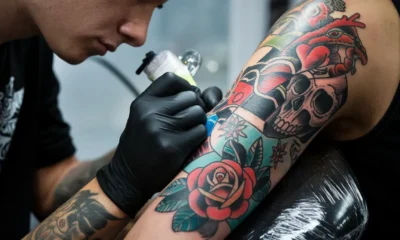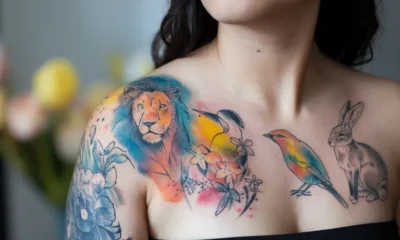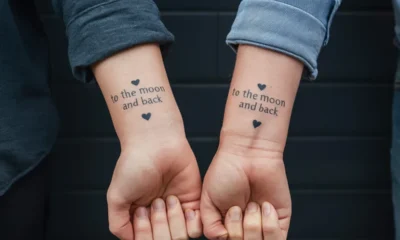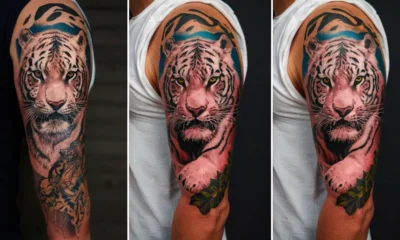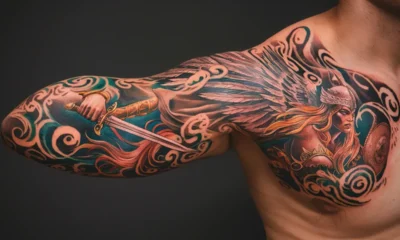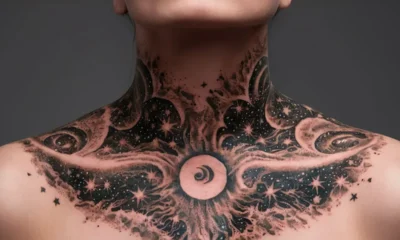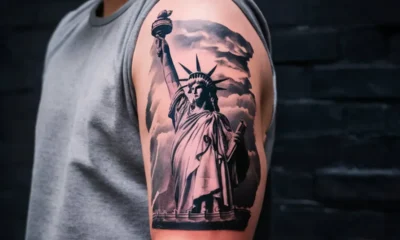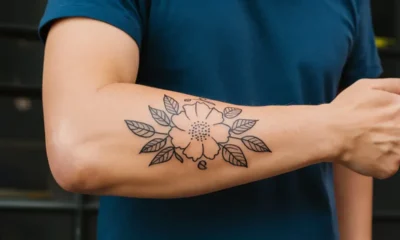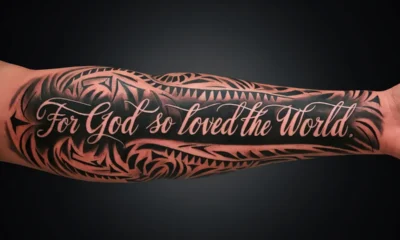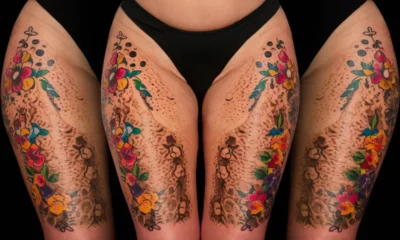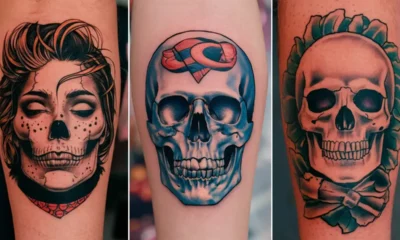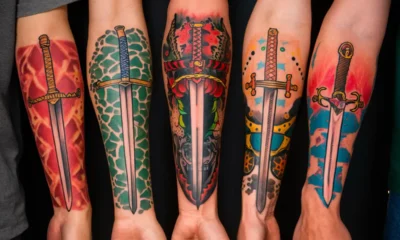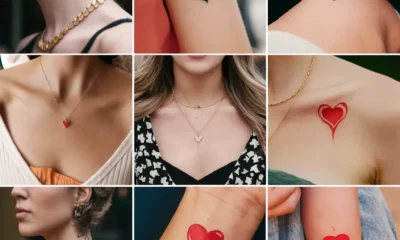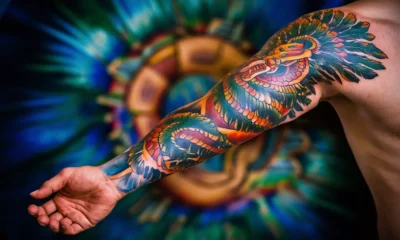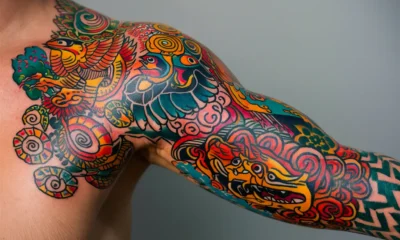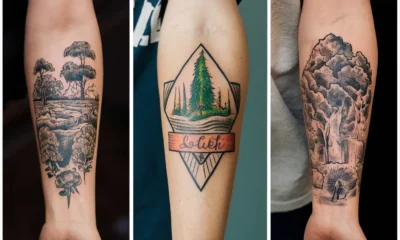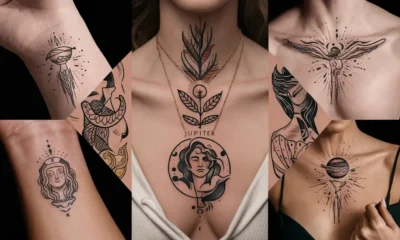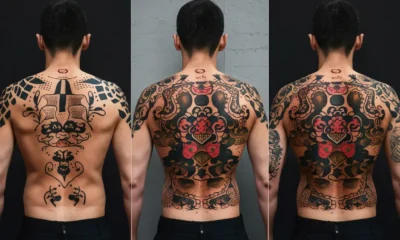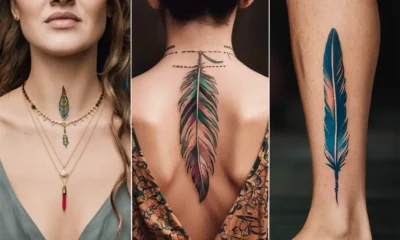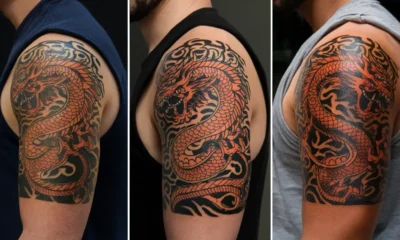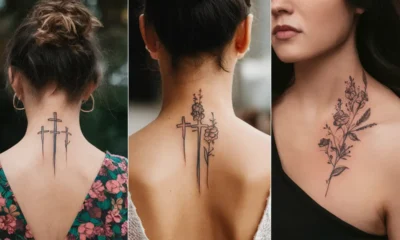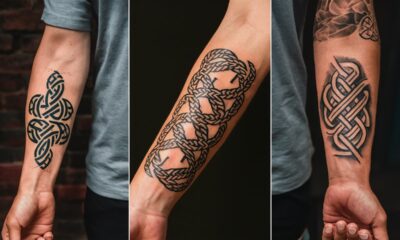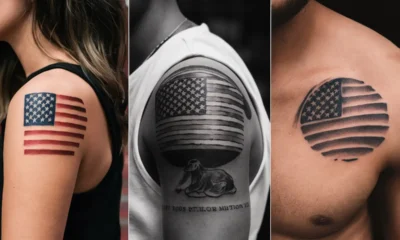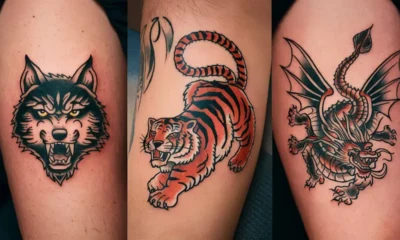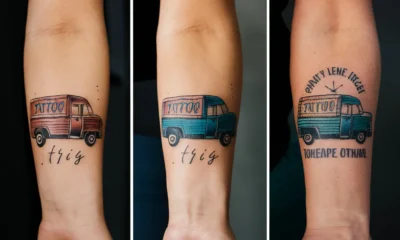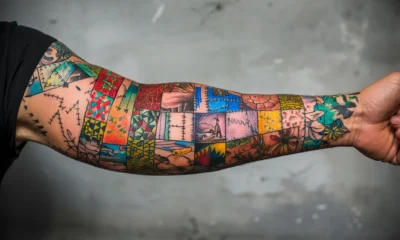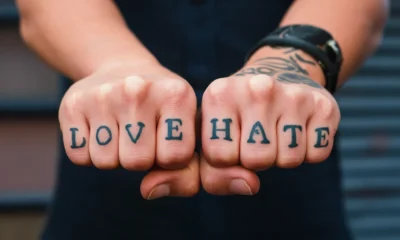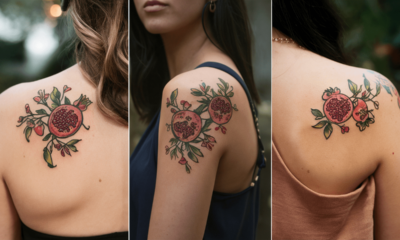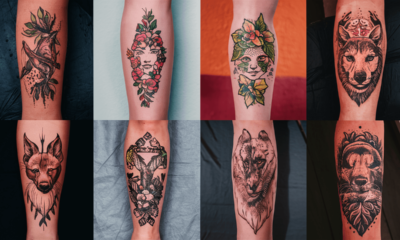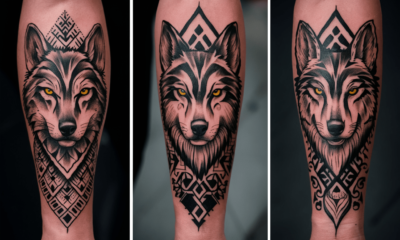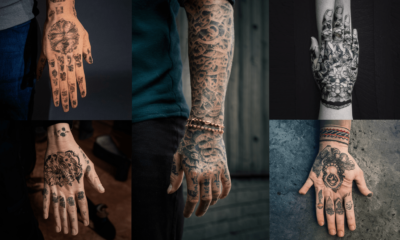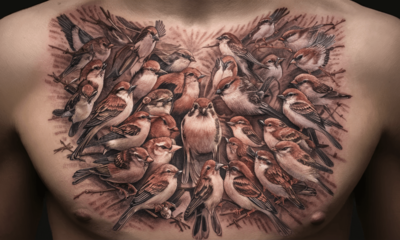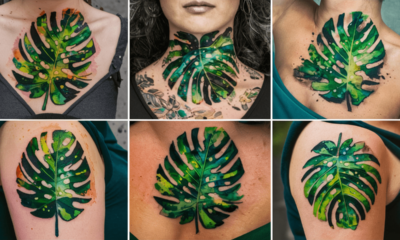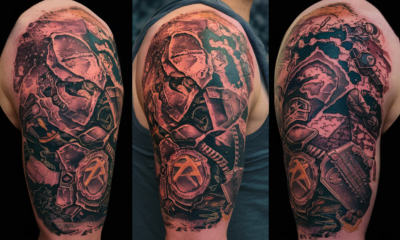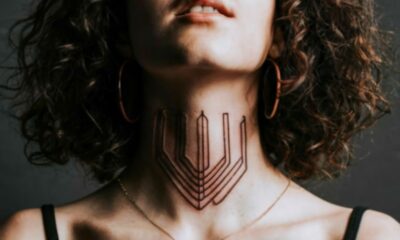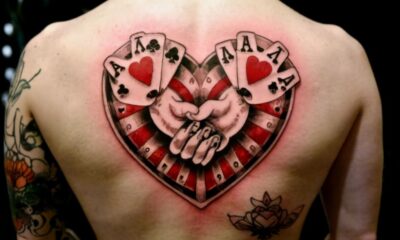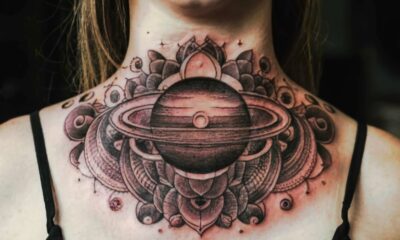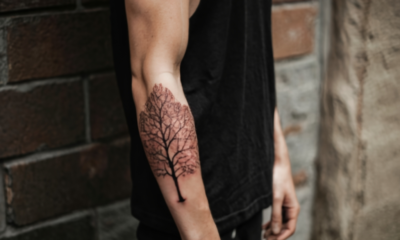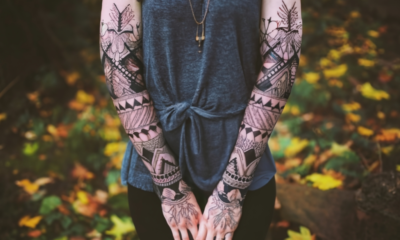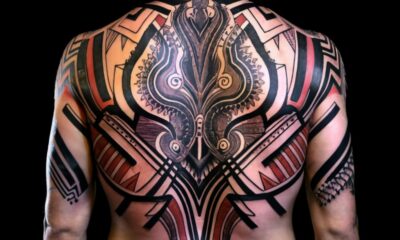Tattoos
Helm of Awe Tattoos Norse Mythology
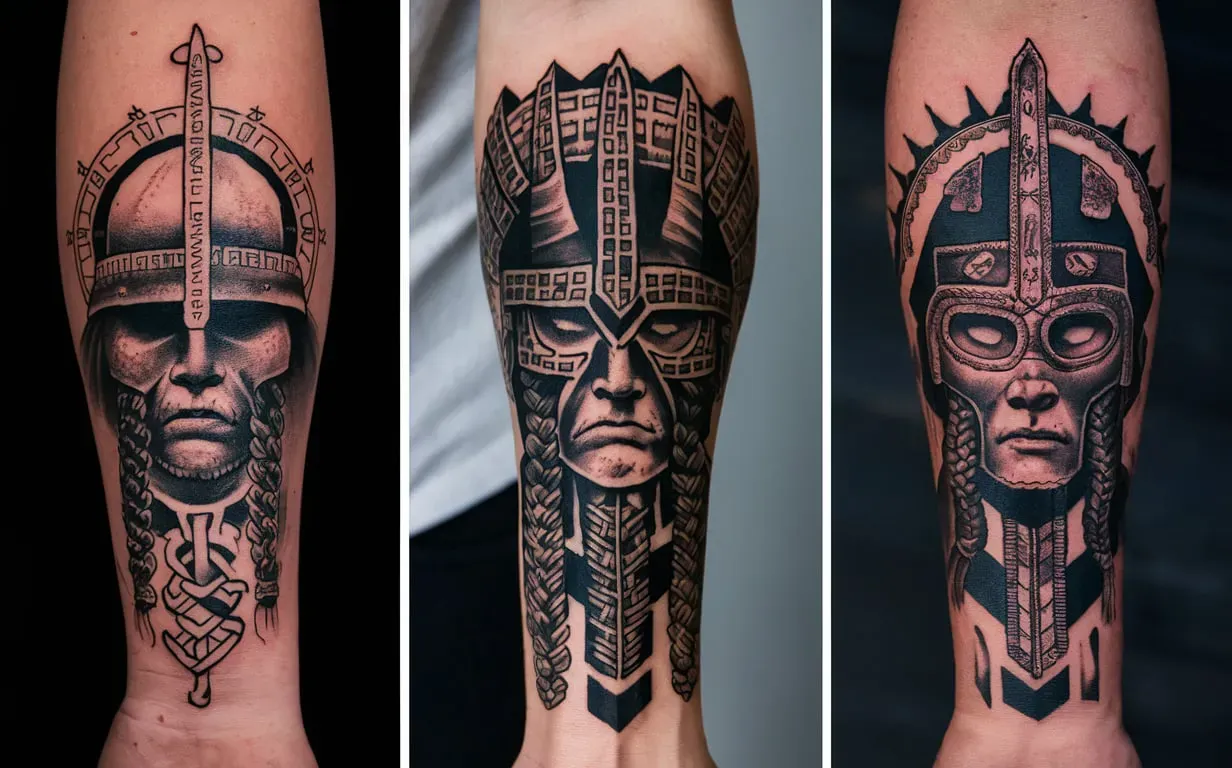
The Helm of Awe, or “Ægishjálmr,” brims with mystique. Rooted in Norse mythology, this symbol, once a protective amulet for Viking warriors, now decorates the skin of many modern enthusiasts. Let’s dive into the world of Helm of Awe tattoos, unraveling their meaning, symbolism, history, and more.
Meaning and Symbolism of the Helm of Awe Tattoo
The Helm of Awe tattoo, meaning protection and power, resonates deeply. In Norse lore, warriors believed this symbol made them invincible, a sort of mystical shield. The term “Ægishjálmr” breaks down to “helm of terror,” an apt name given its intimidating design.
The Helm of Awe symbol, with its eight spiked tridents radiating from a central point, looks like an ancient, fearsome compass. Each spike projects outward, creating a formidable aura. Viking warriors valued this, as it embodied strength, courage, and resilience.
Cultural Value and Historical Context
Culturally, the Helm of Awe holds immense value. Ancient texts like the “Poetic Edda” and the “Prose Edda” mention it. Legendary figures, such as Sigurd the dragon slayer, used it. It wasn’t just a physical shield but a spiritual one too.
Vikings inscribed the Helm of Awe on armor, shields, and weapons. This wasn’t just for show. They believed it gave them an edge, both psychologically and spiritually, in battle. Today, this symbol transcends its historical roots, becoming a modern emblem of personal empowerment and resilience.
Who Would Be Interested in a Helm of Awe Tattoo?
Who gets a Helm of Awe tattoo? A diverse bunch. History buffs, mythology enthusiasts, and those with Viking ancestry often choose it. They want to honor their heritage or feel a connection to ancient traditions.
People who identify with themes of protection, courage, and inner strength find this tattoo meaningful. It’s not just a design; it’s a statement. A visually striking and unique piece, it appeals to tattoo lovers who appreciate detailed, complex art. Whether standalone or part of a larger piece, the Helm of Awe adapts to various styles.
Different Tattoo Designs, Ideas, and Styles
When it comes to Helm of Awe tattoos, the design possibilities feel endless. Each variation tells a unique story, capturing the essence of ancient Norse symbolism in distinct ways.
Traditional Black and Grey
Traditional black and grey tattoos never go out of style. These designs emphasize the bold lines and geometric precision of the Helm of Awe. Artists use meticulous shading and dot work to add depth and texture, making the symbol pop off the skin. This style suits those who love the classic look of traditional tattooing but still want a piece that stands out.
Helm of Awe and Vegvisir Combination
Combining the Helm of Awe with the Vegvisir creates a tattoo rich in meaning. The Vegvisir, known as the Viking compass, symbolizes guidance through life’s tumultuous journeys. Blending these symbols can represent a powerful duality: the Helm of Awe’s strength and the Vegvisir’s direction. Imagine the Helm of Awe at the center, surrounded by the Vegvisir’s intricate compass arms, forming a harmonious, visually compelling piece.
Full Sleeve Tattoos
Want to make a bold statement? Go for a Helm of Awe tattoo sleeve. These expansive canvases blend Viking symbols, runes, and imagery to tell a cohesive story. Picture a sleeve starting with the Helm of Awe on the shoulder, cascading down the arm with scenes of Viking longships and mythological elements. This interweaving creates a tapestry of Norse mythology and personal symbolism.
Modern Interpretations
Modern interpretations of the Helm of Awe offer fresh twists. A watercolor Helm of Awe tattoo uses vibrant splashes of color for a dynamic, ethereal effect. This style breaks away from the traditional black and grey, offering a contemporary take. A minimalist Helm of Awe focuses on clean lines and simple shapes, perfect for those who prefer an understated yet meaningful tattoo.
Abstract and Surreal Styles
Abstract and surreal styles push traditional boundaries. An abstract Helm of Awe might feature fragmented lines, splattered ink effects, or distorted shapes, creating a chaotic, intriguing piece. Surreal designs blend the Helm of Awe with fantastical elements like mythical creatures or dreamlike landscapes. These styles are perfect for those wanting a tattoo that’s both artistic and deeply personal.
Dot Work and Geometric Patterns
Dot work and geometric tattoos suit the Helm of Awe’s intricate design. Dot work creates images with countless tiny dots, resulting in rich texture and shading. Artists use this technique to fill in the Helm of Awe, adding complexity. Geometric patterns focus on symmetry and precision, enhancing the Helm of Awe’s natural geometry. Combining these styles results in a visually stunning, highly detailed tattoo.
Cultural and Tribal Influences
Incorporating cultural and tribal influences gives the Helm of Awe a unique twist. Blend the Helm of Awe with elements from your cultural heritage for a fusion of symbols representing a broader sense of identity and protection. Tribal patterns, with their bold lines and repetitive motifs, complement the Helm of Awe, adding cultural depth and personal significance.
Placement Variations
Placement of the Helm of Awe tattoo influences its design. Smaller, discreet designs fit the wrist, ankle, or behind the ear, offering subtle yet meaningful tattoos. Larger designs, suited for the back, chest, or thigh, provide space for elaborate compositions. Imagine a Helm of Awe centered on the chest, surrounded by runes and Viking motifs, creating a powerful statement.
Helm of Awe Tattoo in Portraits
Incorporating the Helm of Awe into portraits offers a striking approach. Picture a Viking warrior portrait with the Helm of Awe integrated into the armor or background. This adds depth and context, merging personal and mythological elements. Portrait tattoos require skilled artists who can blend realistic depictions with symbolic elements seamlessly.
The Tattoo Artist’s Approach
Creating a Helm of Awe tattoo requires skill and precision. Artists experienced in Norse and Viking designs are ideal. They understand the technical and artistic nuances needed for this intricate symbol.
Geometric and dot work specialists excel here. Their ability to execute clean lines, symmetrical patterns, and detailed shading brings the Helm of Awe to life. Artists like Colin Dale, with his Nordic and tribal tattoos, and Tony Hu, known for meticulous dot work, are top choices.
Aftercare
Aftercare is vital for tattoo quality and longevity. Keep the area clean and moisturized to prevent infection and promote healing. Follow your tattoo artist’s aftercare instructions closely. Use gentle cleansing, moisturizing, and avoid direct sunlight or soaking in water.
A good, fragrance-free moisturizer helps keep the tattooed skin hydrated, reducing scabbing or fading risks. Wear loose clothing and avoid activities causing excessive sweat or friction. Proper aftercare ensures your Helm of Awe tattoo remains clear, vibrant, and detailed.
Conclusion
The Helm of Awe tattoo captivates with its powerful symbolism and striking design. Its meaning, rooted in protection and strength, appeals to many. Whether in traditional black and grey, paired with other Norse symbols, or as part of a sleeve, the Helm of Awe offers endless artistic possibilities.
-
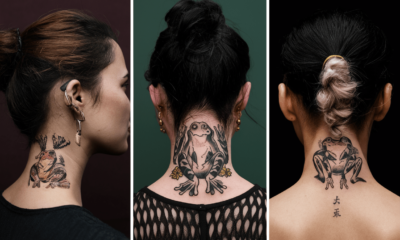
 Tattoos7 months ago
Tattoos7 months agoJapanese Frog Tattoos A Blend of Symbolism and Style
-

 Tattoos7 months ago
Tattoos7 months agoKintsugi Tattoo Embracing Beauty in Imperfection
-
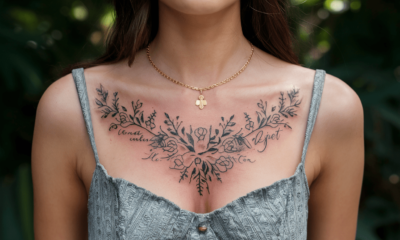
 Tattoos7 months ago
Tattoos7 months agoUnveiling the Artistry Female Chest Tattoos
-
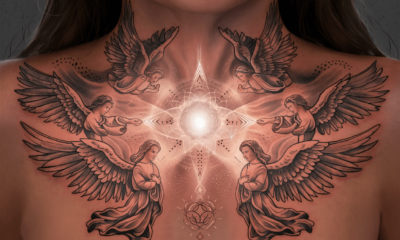
 Tattoos7 months ago
Tattoos7 months agoDivine Guardians Exploring Guardian Angel Tattoos
-

 Tattoos8 months ago
Tattoos8 months agoExploring the Meaning of Stairway to Heaven Tattoos
-
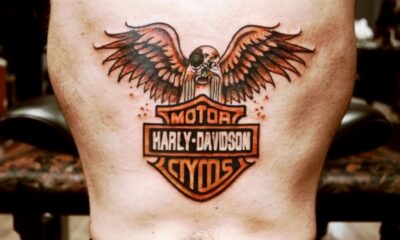
 Tattoos10 months ago
Tattoos10 months agoHarley Davidson Tattoo 14+ Riding the Ink Highway Ideas
-

 Tattoos8 months ago
Tattoos8 months agoCrybaby Tattoos A Journey Through Emotion and Art
-
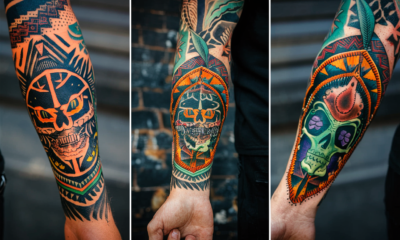
 Tattoos10 months ago
Tattoos10 months agoBlast Over Tattoos Transforming Skin Stories into Living Art

